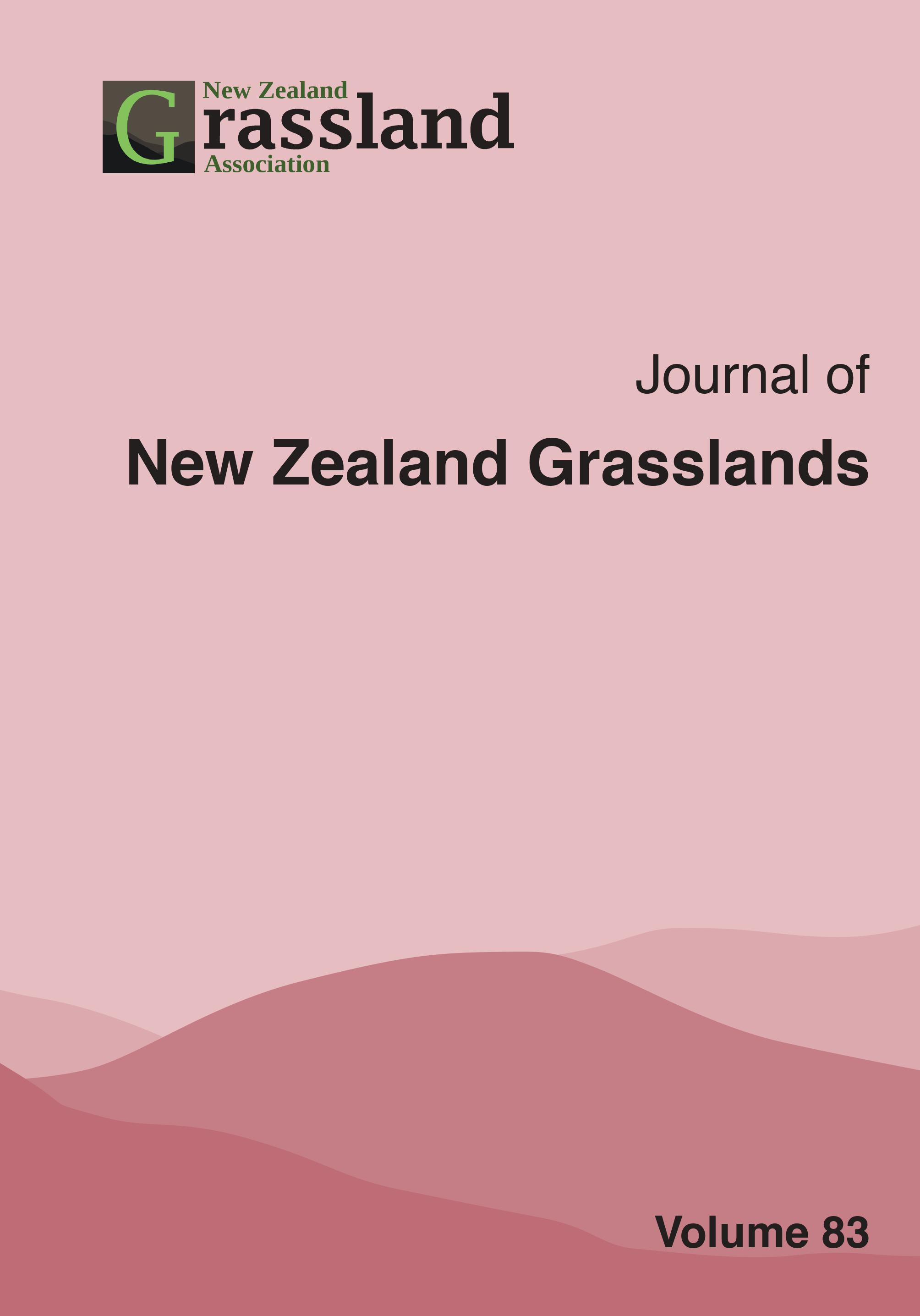Comparing a covered stand-off pad for on/off grazing during winter with conventional winter block grazing 2017-19 at DTT Stratford Demonstration farm
DOI:
https://doi.org/10.33584/jnzg.2021.83.3489Abstract
ABSTRACT
A two-herd farmlet comparison was carried out on the DTT Stratford Demonstration Farm in Central Taranaki examined the profitability, environmental outcomes, animal welfare benefits and practicality of using a covered woodchip stand-off feed pad for wintering cows (Pad.) compared with wintering cows with no removal from pasture (Control). The two farmlets were set up and managed similarly in all aspects except that the non-lactating cows of one herd used the pad every night through the winter and over calving.
Use of the covered pad limited winter pugging damage of pasture to minimal levels while the control farmlet had 6% of the area requiring rolling and some re-seeding. Pasture growth on these pugged areas was 24 to 30% lower than non-pugged areas over the spring to early summer period while estimated annual pasture growth was 2.2% higher on the Pad farmlet compared to the control over the two years. The mean difference in milksolids production across two years was 3%, (range :<1%- 5%) in favour of the Pad herd. Nutrient losses calculated using OverseerFM calculated a 9% reduction in nitrogen leached from the use of the covered pad.
A cost benefit analysis suggests that at best the use of the covered stand-off in winter covered the annual operating cost of the stand-off pad but failed to contribute to the capital cost of providing this facility.
Keywords –Pasture growth, pasture pugging, milksolids production, profit, Labour input, nitrogen leaching
Downloads
Downloads
Published
How to Cite
License

This work is licensed under a Creative Commons Attribution-ShareAlike 4.0 International License.
Copyright
This work is licensed under a Creative Commons Attribution-Non Commercial-NoDerivatives 4.0 International License. Rights granted to the New Zealand Grassland Association through this agreement are non-exclusive. You are free to publish the work(s) elsewhere and no ownership is assumed by the NZGA when storing or curating an electronic version of the work(s). The author(s) will receive no monetary return from the Association for the use of material contained in the manuscript. If I am one of several co-authors, I hereby confirm that I am authorized by my co-authors to grant this Licence as their agent on their behalf. For the avoidance of doubt, this includes the rights to supply the article in electronic and online forms and systems.




